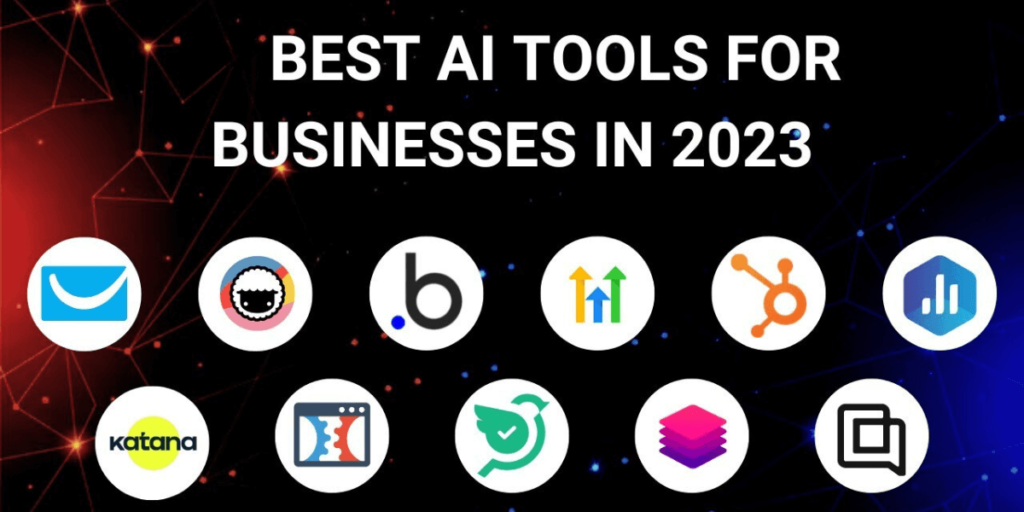Choosing the best AI tools for your needs might seem like a daunting task amidst the sea of options available today. With artificial intelligence firmly rooted in various fields, the right tools can greatly enhance productivity and efficiency. Whether you’re a business owner, a marketer, or just someone looking to streamline daily tasks, navigating this AI landscape is crucial.
I’ll walk you through the process of selecting AI tools tailored to your specific needs. You’ll learn how to identify your objectives, evaluate tool functionalities, and make informed decisions. Let’s simplify the complexity and make this journey an exciting and productive one.
Understanding AI Tools
In today’s tech-driven world, AI tools are pivotal in shaping how we work and live. From chatbots that help answer customer queries to advanced algorithms that predict market trends, AI tools are becoming indispensable. Let’s break this down further to understand what AI tools are and how they can benefit you.

Definition and Functionality
AI tools are software applications that use artificial intelligence algorithms to perform specific tasks and solve problems. These tools simulate human intelligence processes, like learning and reasoning, through machines. They automate mundane tasks, enhance decision-making, and boost efficiency.
How do AI tools work? Think of them as super-smart assistants. They can learn from data, recognise patterns, and make decisions based on that information. For instance:
- Chatbots like ChatGPT provide human-like responses to customer inquiries.
- Content creation tools can generate articles, social media posts, and marketing copy.
- Transcription tools can convert audio speech into written text, making meeting notes much easier to handle.
By integrating these tools, businesses and individuals can revolutionize their workflows.
Benefits of Using AI Tools
Adopting AI tools brings numerous advantages. Here’s a rundown of how they make life and work easier:
- Increased Productivity: AI tools handle repetitive tasks swiftly, freeing up time for more critical work. For example, Zapier’s automation eliminates the need for manual data entry.
- Reduced Human Error: AI-driven tools are reliable and accurate. They reduce mistakes that humans might make, especially with complex calculations.
- Quick Data Analysis: AI can sift through large sets of data in seconds, finding trends that would take humans days or weeks to identify. Tools like Tableau help businesses make data-driven decisions quickly.
- Enhanced Decision-Making: AI provides actionable insights. It analyses patterns and predicts outcomes, helping businesses strategise responsibly.
- Cost Reduction: Although AI tools can be an investment, they save money in the long run by streamlining processes and reducing the need for extensive human labour.
In essence, AI tools aren’t just a luxury; they’re becoming a necessity in our fast-paced world. From improving efficiency to cutting down errors, these tools provide a clear pathway to smarter working practices.
Different Types of AI Tools Available
AI tools are becoming essential for boosting productivity and efficiency. From chatbots to automation platforms, these tools cater to various needs. Let’s explore some of the main types of AI tools available.
Chatbots and Virtual Assistants
AI chatbots like ChatGPT and virtual assistants are revolutionising customer support and task automation. They can interact with customers, providing instant answers to common questions.
For example:
- Customer Support: Chatbots help in answering FAQs, reducing the load on human agents. This means quicker responses for customers and more time for staff to handle complex queries. Companies like Amazon are using chatbots to enhance their customer service.
- Task Automation: Virtual assistants can schedule meetings, set reminders, and even manage emails. By automating these mundane tasks, employees can focus on more strategic work.
Want to know more about their applications? Check out this LinkedIn article on the role of chatbots in customer service.

Content Creation Tools
AI isn’t just about chat; it’s also a creative powerhouse. Tools like Jasper and Copy.ai help you generate text, while platforms like DALL·E and Midjourney create stunning images.
Here’s how they work:
- Writing Assistants: Tools like Jasper help generate blog posts, social media updates, and even ad copy. They can save hours of brainstorming and writing time.
- Image Generation: AI can create custom images for blog posts and marketing materials. This can make your content more engaging and visually appealing without hiring a graphic designer.
Want to dive deeper? Here’s a list of top AI content generators to explore.
Data Analysis and Insights Tools
Analysing large datasets manually can be overwhelming. AI tools like IBM Cognos and Qlik simplify this by offering powerful data analysis capabilities.
These tools can:
- Process Large Datasets: They can quickly sift through vast amounts of data to find patterns and trends, providing actionable insights.
- Predict Outcomes: By using historical data, AI can forecast future trends, helping businesses make informed decisions.
Learn more about their impact on data analysis here.
Automation Tools
Automation tools are like having a super-efficient assistant who never takes a break. Services like Zapier and Bardeen.ai can automate repetitive tasks, streamlining workflows and boosting productivity.
Consider these benefits:
- Streamlined Workflows: Automation tools can handle repetitive tasks like data entry, scheduling, and reminders, freeing up time for more complex tasks.
- Error Reduction: Automating routine tasks reduces the chance of human error, ensuring more consistent and reliable outcomes.
Curious about specific tools? Check out the top AI workflow tool platforms for 2024.
With these diverse AI tools, you can enhance various aspects of your work, from customer service to content creation and data analysis. The key is to identify what you need and find the right tool to meet those needs.

How to Choose the Right AI Tools for Your Needs
When it comes to picking the best AI tools, it’s essential to know what you’re looking for. With so many options on the market, it can be overwhelming. Below are some key steps to help you choose the right AI tools tailored to your needs.
Define Your Objectives
First things first, you need to think about what you want to achieve. Are you trying to automate tasks, improve customer service, or create content? Clearly outlining your goals will help you narrow down your choices.
- Automation: If you’re looking to automate repetitive tasks, tools like Zapier can be valuable.
- Customer Service: For improving customer interactions, chatbots such as ChatGPT might be what you need.
- Content Creation: Tools like Jasper can assist in creating engaging content.
Evaluate Functionality and Usability
Next, consider whether the tools meet your specific needs and are easy to use. A tool’s functionality should match your requirements without being too complicated.
- Ease of Use: Choose tools that have a user-friendly interface.
- Features: Make sure the tool offers the features you need, such as advanced analytics or automation capabilities.
You can find detailed evaluations and tips on choosing the right tools over at AI Expo Europe and ClearObject.
Consider Integration and Compatibility
It’s crucial to ensure that the AI tools you choose can integrate seamlessly with your existing systems. Compatibility can save you a lot of headaches in the future.
- Software Compatibility: Check if the AI tool works well with the software you’re currently using.
- Integration Capabilities: Look for tools that offer easy integration options with other services you rely on.
For a comprehensive guide on integration and compatibility, you can visit SingleGrain.
Budget and Cost-effectiveness
Finally, think about your budget. The cost of AI tools can vary greatly, and it’s essential to consider both the upfront costs and long-term benefits.
- Subscription Fees: Ensure that you consider all subscription fees and compare them with the features offered.
- Return on Investment (ROI): Assess the potential ROI of the tool. Will it save you time and money in the long run?
More insights on budgeting and cost can be found on Trendskout.
By following these steps, you can make an informed decision and select AI tools that truly fit your needs. Continue to explore and compare options to find the perfect fit for your objectives and workflows.

Conclusion
Choosing the best AI tools for your needs can feel like trying to find a needle in a haystack amid all the options available today. However, by focusing on certain key criteria, you can make the right choice for your personal or professional goals.
Define Your Objectives
First and foremost, you need to understand what you want to achieve with AI. Are you looking to automate tedious tasks, enhance your content creation, or improve customer service through chatbots? Knowing your goals will help narrow down your choices. According to IBM, clearly defining your objectives is essential to selecting the right AI platform.
Evaluate Features and Capabilities
Once you’ve outlined your objectives, look at the features and capabilities of different AI tools. For instance, if you need help with writing, tools like Jasper and Copy.ai offer powerful content creation abilities. On the other hand, if project management is your goal, look at options like Asana. Make sure the tool you choose has the functionalities that align with your needs.
Find our full review of jasper.ai Here

Consider Integration and Scalability
Integration with your existing systems is another crucial factor. Check if the AI tool can smoothly integrate with the software you already use. Additionally, consider the scalability of the tool. As your needs grow, will the AI tool grow with you? Tools that offer better integration and scalability will save you time and money in the long run. You can get more insights from this comprehensive guide on choosing the right AI tool.
Look for User Reviews and Case Studies
User reviews and case studies can provide valuable insights into how effective an AI tool is in real-world applications. Reviews often highlight the strengths and weaknesses of a tool, helping you make an informed decision. Platforms like Forbes often provide lists of top AI tools with user feedback.
Budget and ROI
Finally, consider your budget and the potential ROI. While some AI tools might be free or low-cost, others can be quite expensive. Evaluate whether the investment in a particular tool will offer significant returns in terms of time saved or increased productivity. Sometimes spending a bit more can lead to substantial gains.
Choosing the best AI tools is not just about picking the most popular one but about finding the right fit for your specific needs. By considering your objectives, available features, integration capabilities, user feedback, and budget, you’ll be well on your way to enhancing your workflow with the best AI tools.


